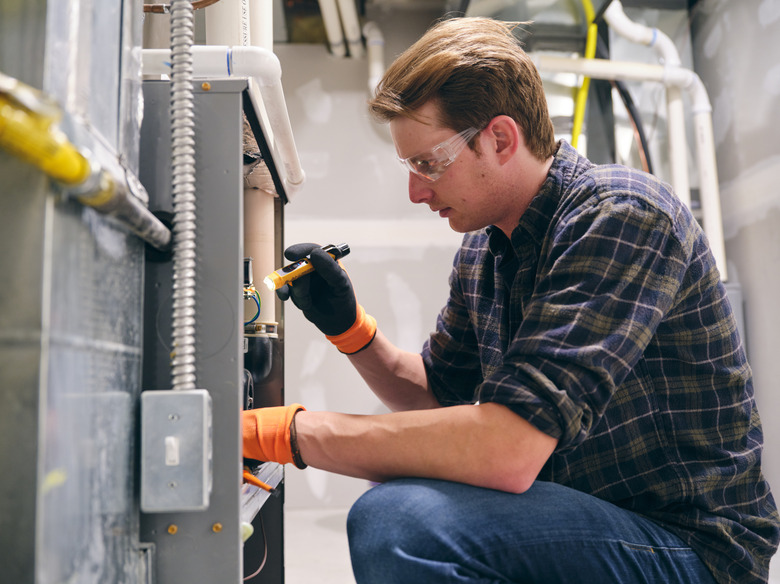What Causes A Furnace To Vibrate A House?
Fireworks on the Fourth of July. Booming thunder. Both of these noisemakers can shake your floors and rattle your windows. Unnerving though they are, they're fortunately infrequent, but when your house has the shakes on a regular basis and vibrates each time the furnace kicks on, it isn't just unnerving but annoying and possibly even maddening depending on the severity of the problem. So, it's good to know that the source of such disturbance is often easily identified and remedied.
It's important to keep in mind that when a furnace causes vibration issues or makes any odd noises you should immediately investigate. It may involve nothing more than some loose window glass in an older house that's too easily vibrated, but it can also signal problems in the heating system that lead to wear and tear on the furnace or dangerous hazards for those in your home.
Tip
House vibration that occurs when a furnace kicks on can result from problems with the furnace system itself, problems with a house's structural elements or both.
Troublemaking Furnace Problems
A furnace can talk to us in ways that signal trouble without shaking the walls around us, but thanks to ductwork, there's distribution of all furnace noises and, if they're loud enough, creation of vibration. Some house-shaking noises simply signal the need for a DIY project, but some of these require an immediate call to your HVAC professional.
- Bolting issues — shaking and rattling of the system.
- Unsecured ductwork — rattling by forced air.
- Aging fan motor or dislodged blower fan — rattling.
- Delayed ignition causing a loud boom — from gas buildup in the furnace chamber due to the burner not lighting properly.
- A rumbling sound at completion of the heat cycle — several causes and a signal that carbon monoxide may be escaping into your home.
- A loud bang or rattle when the heat kicks on — possibly indicating a cracked heat exchanger, a cause of carbon monoxide leaks.
- Loose panels — rattling.
If you have metal ductwork and want to decrease furnace noise, consider replacing a small section of the ductwork leading to each heat register with insulated flexible duct. You can also replace a small section of the system's main plenum with a rubber boot to muffle sound and install separate ductwork lines from the main trunk to each register.
House Structural Issues
Older homes may have easily rattled windows, but with their solid wood doors and floors, they're usually more soundproof and less likely to vibrate than newer houses with abundant drywall, plywood and hollow-core doors. The louder a sound, the more likely it is to vibrate a structure, especially one lacking solid parts. Though the first remedy to a furnace-caused vibration is to simply fix or replace the furnace, taking steps to soundproof your house and make things more solid makes sense.
There are limits to what can be done for an existing newer home, but installing sound-absorbing flooring, replacing hollow-core doors with solid wood doors and ensuring that all window glass is secured can decrease vibration. Other steps, such as installation of tight-fitting interior wall insulation, can happen during remodeling projects.
If you're planning to build, you can eradicate future problems caused by an aging furnace system by incorporating soundproofing elements into your design plan, such as sound-absorbing wall and floor materials and insulated ductwork for your heating and cooling system.
